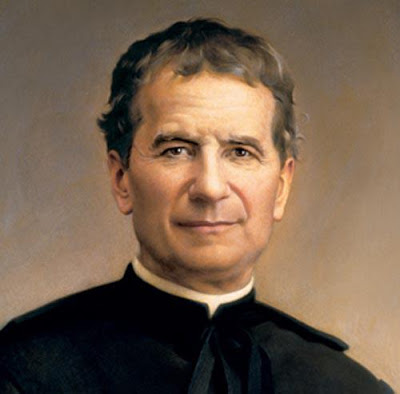Our about
St John Bosco


On 8 December 1841, Fr. Bosco chance upon Bartholomew Garelli in the sacristy of the St. Francis Church in Turin. He takes him aside and starts with a Hail Mary and the basic catechism. This marks the beginning of his work among the young. Week after week, more boys start coming. On Easter Sunday of 1846, he finds a place for them, the Pinardi shed in Valdocco, in the outskirts of the city.
In 1854 Fr. Bosco starts the Salesian Congregation of priests and brothers, to ensure stability for his work among the young. In 1864 he lays the foundation stone of the Basilica dedicated to Mary Help of Christians. In 1872 he teams us with Maria Domenica Mazzarello and starts the Institute of the Salesian Sisters. Gradually he sets the ground for the Association of the Salesian Cooperators. Afire with love for those most in need, Fr. Bosco turns his gaze to the mission lands and in 1875 sends the first expedition to Argentina.
At the dawn of 31 January 1888, Fr. Bosco dies, a man whose strength has been sapped by the immense work done, but in the eyes of everyone, a saint of everlasting memory. In 1929 he is declared “Blessed” by Pius XI. And on Easter Sunday of 1934, he is declared a saint by the Church, and proclaimed the “Father and Teacher of youth.”
Youth Centres & Oratories
Oratories are the origin and prototype of every Salesian work. Even today it is the first form of Salesian presence among the young. Here we accompany the young person from his early teens through his period of youth and give him a typical Don Bosco style of educative experience which sustains him throughout his life. Through Oratories, we try to reach out to the maximum number of young people, in particular those who are poor and in most need. Sportive healthy entertainment and elementary formation to face life are the goals of Don Bosco Oratories and Youth Centres. All Don Bosco Oratories and Youth Centres are open to all young people without any discrimination of creed or caste or social class, in particular to those who are poor or at risk. Faithful to the intention of Don Bosco Oratories and youth centres are a platform for the total development of youth-“upright citizens and good Christians”.(cf. C. 31)
In the Salesian Congregation worldwide (133 countries) there are 1929 festive or weekend Oratories and Youth centres, which offer a variety of services to youngsters after school hours; for older teenagers and young people; a number of these provide the young unemployed or those on the margins of the educational system the possibility of acquiring a basic formation or of preparing themselves for work; some also try to rehabilitate young people in serious at-risk situations. In India, there are 129 oratories and youth centers, which offer multiple possibilities of contact with the mass of youngsters, adolescents, and young people.
The First Oratory-Valdocco- the practical ground of Don Bosco’s Pedagogy
The Oratory of St Francis of Sales at Valdocco was the first established apostolate, the one that inspired all the others, brings us back to the original experience of the Salesian mission. Today, referring to the Valdocco Oratory is not a historical exercise, simply looking back to what occurred there with Don Bosco. It is the way for us to return to our origins, to the source that inspired our work and activities (cf. C. 41), and to verify the fidelity of our educational pastoral activity. Don Bosco’s Oratory in Valdocco is still the lasting criterion for discernment and renewal in all our activities and works (C. 40).For Salesians young people come before the works! Their needs require that our institutions and activities be rethought, rewritten and reordered if we are to be faithful to the mission entrusted to us “to be signs and bearers of God’s love” (C. 2 ).
